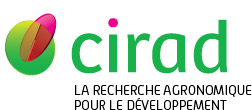Soler Alain, Pochat Corentin, Perrin Marie, Mendoza Jessica, Latchimy Flora. 2025. Systemic acquired resistance: Plant priming for ecological management of mealybug-induced wilt in MD2 and Queen Victoria pineapples. Agriculture (Basel), 15 (3):264, 12 p.
|
Version publiée
- Anglais
Sous licence  . .
Soler_A_et_al_2025_SAR_in_plant_priming.pdf Télécharger (722kB) | Prévisualisation |
Résumé : Pineapples are highly susceptible to “Wilt disease”, caused by the biotrophic insect Dysmicoccus brevipes that also transmits several Wilt-associated viruses (PMWaVs). Conventional farms manage mealybugs and Wilt disease using chemicals. However, many of these chemicals have been banned in Europe due to safety concerns, leading to a critical need for studies on pesticide-free control methods. During their evolution, plants have developed natural defences, such as systemic acquired resistance (SAR), against pathogens and pests. In this study, salicylic acid (10−3 M) was applied to MD2 and Queen Victoria pineapple plants as a foliar spray or soil drench, followed by mealybug infestation. This treatment enhanced defences, assessed through mealybug multiplication rates, and biochemical and molecular responses of tissue-cultured plantlets under controlled conditions. Phenylalanine ammonia-lyase activity (PAL) was measured as a potential SAR signalling enzymatic marker. Additionally, the expression levels of four genes were analyzed, which included AcPAL and AcICS2, both linked to salicylic acid synthesis; AcMYB-like, a transcription factor regulating salicylic acid biosynthesis; and AcCAT, which is involved in H2O2 level control in plants. SA elicitation reduced the mealybug multiplication rate by 70% on pineapples compared to untreated plants. In this study, the biochemical marker (PAL) and three molecular markers (AcPAL, AcICS2, and AcCAT) showed significant differences between primed and unprimed plants, indicating SAR induction and its role in the pineapple–mealybug interaction. In MD2 and Queen Victoria, PAL increased by 2.3 and 1.5, respectively, while AcPAL increased by 4 and more than 10. The other molecular markers, AcICS2, AcCAT, and AcMYB-like (a transcription factor), increased by 3, except for the last one in Queen Victoria. The reduction in mealybug populations with SAR is less effective than with pesticides, but it provides a valuable alternative on Réunion Island, where the only remaining insecticide will soon be banned. In addition, SAR priming offers a promising, eco-friendly strategy for managing mealybug populations and reducing Wilt disease in pesticide-free pineapple cropping systems.
Mots-clés Agrovoc : Ananas comosus, résistance aux maladies, résistance aux organismes nuisibles, maladie des plantes, expression des gènes
Mots-clés géographiques Agrovoc : France, La Réunion
Mots-clés libres : Pineapple wilt, Dysmicoccus spp., Biocontrol, SAR, Integrated management of mealybugs, Ecological control
Agences de financement européennes : European Regional Development Fund, European Commission
Agences de financement hors UE : Conseil Régional de La Réunion
Auteurs et affiliations
- Soler Alain, CIRAD-PERSYST-UPR GECO (FRA) - auteur correspondant
- Pochat Corentin, Université de Montpellier (FRA)
- Perrin Marie, ISARA (FRA)
- Mendoza Jessica, Universidad de Ciego de Avila (CUB)
- Latchimy Flora, CIRAD-PERSYST-UPR GECO (REU)
Source : Cirad-Agritrop (https://agritrop.cirad.fr/611834/)
[ Page générée et mise en cache le 2025-02-04 ]




